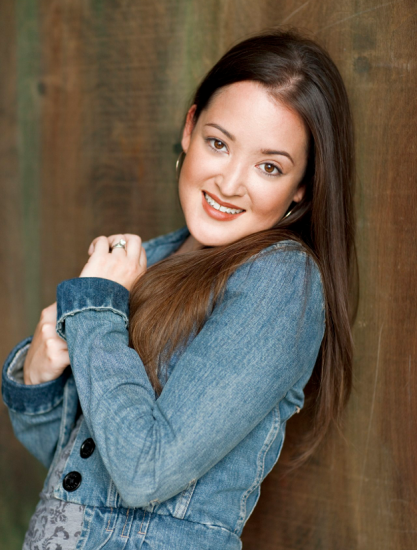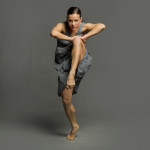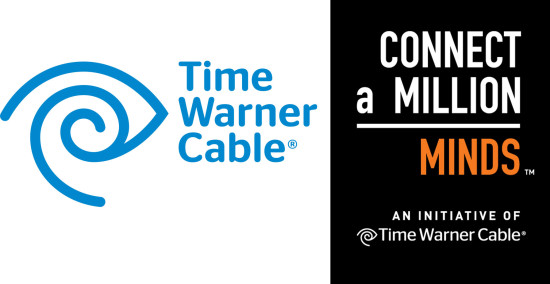This February, Dr. Janetta Rebold Benton will take the Schimmel Podium once again to bring us an exciting new series titled “Architectural Masterpieces.” This time, she will be bringing particular attention to global architectural achievements. The first three lectures will focus on the architecture of a single Western European nation, including Italy, France and England. The final lecture in the series is titled, “Extreme Architecture,” and responds, “to the global nature of recent architecture that crosses all geographic boundaries.” I recently had the opportunity to interview the esteemed lecturer and learn first hand what scholars will learn from this series.
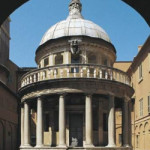
This photo was taken by Dr. Janetta Rebold Benton in Rome.The Tempietto was designed by Donato Bramante
MT: You are known to Schimmel patrons for your exceptional lecture series on “Great Masters” and French and Italian art. You have included architecture in your lectures before. Why did you want to focus primarily on architecture this time around?
JB: Architecture is said to be the most representative art form of a culture—more so than painting or sculpture—on the grounds that to create a building usually requires a consensus of opinion among several people, as well as a significant commitment of money, time, effort, and land. A building must serve a purpose or several purposes—it must be functional. And it must withstand the elements. On a more personal level, architecture holds a special appeal to me; when I was an undergraduate at Cornell I seriously considered switching my major from Fine Arts to Architecture.
MT:Each of your first three lectures in the series focuses on a specific country’s architecture from antiquity and onward. How did you go about selecting which countries would be discussed?
JB: I focus on major Western European countries that are home to exceptional examples of architecture and that represent many centuries and a variety of styles. The intent was to present a country’s chronological “architectural profile”—which really is a history of that country and its culture.
MT: Do you find any of the three countries’ architecture to be your favorite?
JB: Ah, that is akin to asking a parent to choose their favorite child! I wrote my doctoral dissertation at Brown on an Italian topic, lived in France for 4 plus years, and have family in England. But, if pressed, I would pick France because it is the country of origin of Romanesque and Gothic architecture, as well as home to countless expressive gargoyles that perch on these buildings.
MT: As an avid traveler yourself, I imagine you have seen a great deal of the architecture in person. Is there a single building that, upon seeing it for the first time, exceeded your expectations of it? Why? Is there any building that you found to be underwhelming?
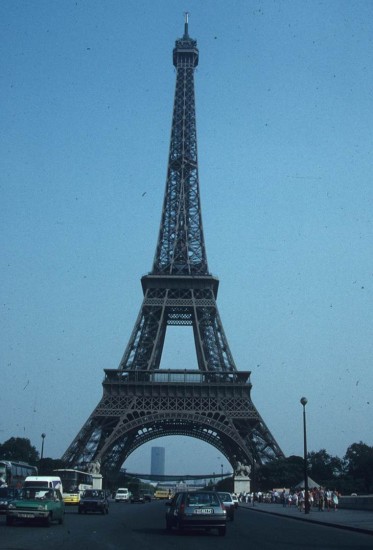
More photography by esteemed lecturer, Dr. Janetta Benton. The Eiffel Tower in Paris, France. Architect: Gustave Eiffel.
JB: You ask excellent, very difficult, questions! Yes, I travel extensively and do as much of my own photography as possible. For a building that exceeded my expectation, I would pick Beauvais Cathedral. This High Gothic cathedral demonstrated just how high it was possible to build a vault (158 feet) using flying buttresses, pointed arches, and ribs—the technology of the time. Beauvais collapsed, was rebuilt, but never finished. After Beauvais, buildings became lower in the Rayonnant Gothic style. Underwhelming? Please do not be horrified, but it would be Stonehenge! Although I knew the dimensions and had seen the photographs, when I actually arrived at Stonehenge I expected it to be physically larger. But in no way did that diminish the fascination and mystery of Stonehenge.
MT: Your final lecture in the series focuses on “Extreme Architecture.” What qualifies as extreme architecture to you? What are your criteria for the buildings being discussed?
JB: My problem in preparing the last lecture was not that I had to search for buildings to include, but that there were too many possibilities. There were also several points that I wanted to make with the examples selected: Perhaps most important is that architecture is now more international and global than ever before. A museum in France may be designed by a Chinese architect (the Louvre pyramid by I.M. Pei) and a theater in China may be designed by a French architect (The National Grand Theater in Beijing by Paul Andreu). I also wanted to document the current interest in novelty, in creating a building that is functional but is visually distinct from anything created before—like a house shaped like a spiral sea shell. And I wanted to indicate that architecture had shifted from focus on religious buildings (churches and cathedrals) and secular dwellings for the wealthiest (palaces and castles) to museums, theaters, office buildings and skyscrapers, and an interest in recycling materials.
MT: Do you have a favorite architect of this current generation? What separates their work from the rest?
JB: Another tough question! I am going to select the Japanese architect Shigeru Ban, not for the beauty of his buildings, but for the importance of his work in creating housing for disaster victims. Using recycled cardboard construction, his buildings are quickly and inexpensively erected.
MT: Living in New York City, one can see an array of different architectural styles. We are blessed with gorgeous art deco sky scrapers like the Empire State Building and the Chrysler Building, Neo-Gothic cathedrals like St. Patrick’s and incredible suspension bridges like the Brooklyn Bridge. Do you have a favorite piece of New York architecture? Why is it your favorite?
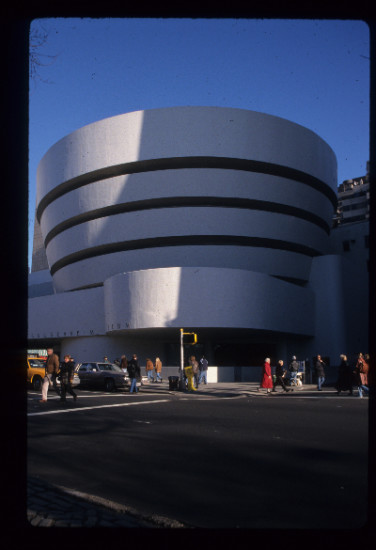
Frank Lloyd Wright’s Guggenheim Museum in New York City. Taken by Dr. Janetta Rebold Benton
JB: The Guggenheim Museum. I will not even hesitate to answer. Frank Lloyd Wright’s Guggenheim offers the visitor art exhibitions within a work art. The previous division between architecture and sculpture blurs—the Guggenheim may be viewed as an enormous inhabitable sculpture. Do you find that the building complements or conflicts with the art work displayed here? The Guggenheim raises the possibility that the museum itself may be a work of art.
“Art History Alive” with Dr. Janetta Rebold Benton: “Architectural Masterpieces. Schimmel Center for the Arts; 3 Spruce St. New York, NY; February 4: Italy; February 11: France; February 18: England; February 25: Extreme Architecture; All tickets $29; All lectures take place at 12:15-1:15pm; Call (212) 346-1715, (866) 811-4111 or visit schimmel.pace.edu
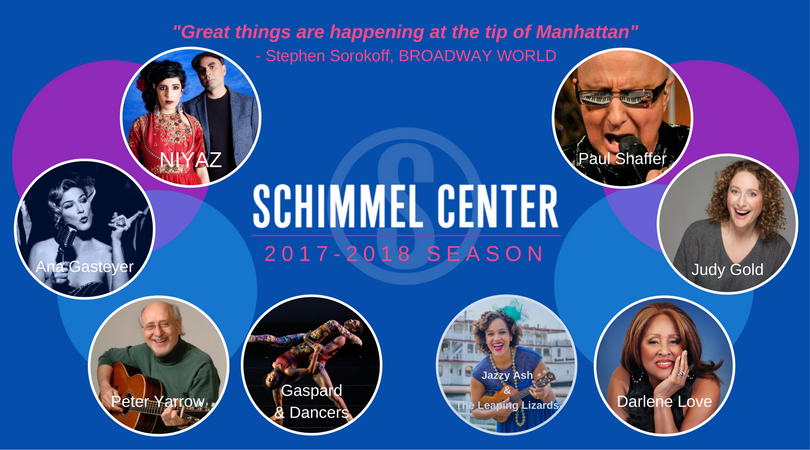
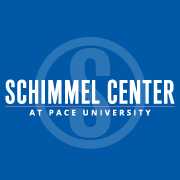 Schimmel Center seeks to enrich and engage our audiences by bringing world-class talent to Lower Manhattan. Our programming features internationally-acclaimed talent in the areas of music, dance, cabaret, comedy and family programming
Schimmel Center seeks to enrich and engage our audiences by bringing world-class talent to Lower Manhattan. Our programming features internationally-acclaimed talent in the areas of music, dance, cabaret, comedy and family programming 


